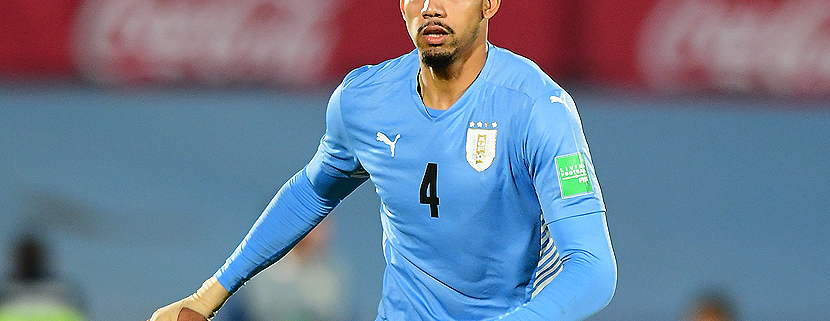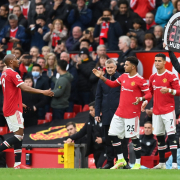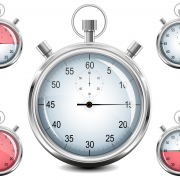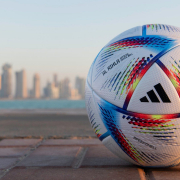Virus FIFA. Fixture, performance and injuries.
We have experienced two intense weeks of international commitments with many teams preparing for or looking forward to the next World Cup in Qatar in the following months of November and December.
In addition, in Europe, after the start of the National League and International Champions League and Europa League competitions on the club calendar, the final matches of the Nations League at national team level have coincided, with important repercussions for many teams in their classification in the Final Four or the relegation of category in the case of entering the last of their group.
Congested Fixture & FIFA Virus
In this congested fixture period, probably added to the additional competitive stress, some important and decisive players for their clubs has been injured. The “FIFA Virus” has affected many teams and may be having a fearsome impact on the next World Cup.
The other day some media channel interviewed me and asked where they analyzed this whole situation, mainly due to the increase in the number of injuries on this international calendar. After analyzing my live intervention, it seemed interesting to me to express my opinion and above all all the nuances that revolve around this changing and complex environment. From a club perspective, it’s always a source of satisfaction and joy when a player is called up to his national team, but it’s also a reason for concern because you lose the daily follow-up of the player.

Variables that affect the incidence of injuries in the National Team environment
What variables really affect this high injury incidence in international periods? What is the economic cost (real and sport) that clubs can have with these injuries? What influence do these injuries have on the fitness of players and teams? How could we improve our intervention on the virus, and reduce the risk?
As variables to take into account and that affect the high incidence of injuries in our athletes, we should highlight among others:
- Methodological change club vs selection or selection vs club.
- Change of schedules and daily routines.
- Change of location, sports centers, material and personal resources.
- Change of planning and preparation pre and post game.
- Change in nutrition, food and supplementation.
- Hours of sleep, contemplating changes in the time zone, sometimes even the season of the year with transoceanic flights (jet lag).
- Presence or not of the families, in terms of the tranquility and stability of the player.
- Difficulty in carrying out individualized training sessions, depending on the player’s fitness, minutes played, prevention needs and their current fitness.

Virus FIFA Performance
Obviously, all these multivariable factors are already difficult to control in stable contexts and even more complicated in a context as intense and variable as the concentration of a national team for 7 to 10 days. In addition, the economic consequences of having a top-level player who comes from the national team injured are devastating. The clubs must continue paying the salary, even when this player cannot train or compete with his team. It also often happens that when you have international players in your cast, these players are the ones who earn the most money and are also very relevant pieces in the team’s preparation every weekend. Not only is there an economic expense, but there is also a cost in performance results, as the literature tells us that the success or positive results of a team are directly proportional to the availability of its squad.
On the other hand, from the conditional point of view of performance, we are faced with the question of how long it will take for the athlete to recover to play, but honestly we should go further, and ask ourselves how long it will take for the player to recover the current level of performance, since in many cases his state of form prior to the injury is much higher than his level in the first week back with the team.
Virus FIFA ¿Possible solutions?
As a proposal in the process of trying to reduce the problem, on the one hand, I would increase the channels of communication between the clubs and the national team. Almost all clubs and national teams altruistically share information regarding the player (internal and external loads, individual strength and prevention plan, as well as competition data) and there is a very good connection. But it is true that when this connection does not exist or data or information is missing, some mistakes can be made during the process.

And lastly, from a more technical and scientific point of view, I believe that an exhaustive control and recognition of the trips and schedules of each of the players should be carried out. It is normal to see a decrease in performance either in the match before or after the FIFA days, sometimes also caused by external circumstances such as flights, concentration schedules and/or reduced hours of rest and recovery. From a selection point of view, it would be very sensitive to the role changes of some players, and also to their conditional demands caused by position changes. From that side, it must be added that I would not only study the total minutes of the players in their clubs, but also the quality of those minutes and the competitive density of their matches, in order to advise which athlete is more adapted to play in high and double weekly competition and those not so much. Furthermore, a consecutive study would be necessary on one of the values that helps us to analyze and decide the optimal load for the player. We are talking about the acute-chronic load ratio carried out in the last few days compared to the last few weeks, often key to assessing not only the athlete’s load, but also the load differences to which he has been subjected in the change of context.
What will happen in the next window of international commitments? We don’t know, but it is true that football lovers will enjoy a great World Cup and a fantastic show. We hope that, at the level of clubs and national teams, we will have a lower incidence of injuries and, after exhaustive control and communication, we will be able to contribute to the optimization of the performance of each of our players.
Greetings, let’s keep moving forward…
AG











Leave a Reply
Want to join the discussion?Feel free to contribute!